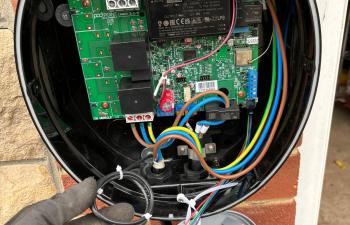Many new housing developments have been popping up in recent years in Darlington, and not many buyers will have a fuse box replacement high on their list of priorities.
When looking at a new build, most installations will be recent and will have had to have passed building regulation testing meaning the buyer doesn’t have to be concerned immediately. However, in older properties where everything seems to be in fine working order it's not unusual to find a fuse box that’s been in use since the 1960’s - in this case it’s time to start searching for an electrician for a fuse box replacement in Darlington!
If you aren't sure about the condition of your fuse box its always best to check with your electrician who will let you know if your home can benefit from upgrades in line with the latest electrical regulations and protection.
Legislation has changed a lot over the years with new and improved safety features being introduced. Tell-tale signs of dated fuse boxes include; a wooden back, cast iron switches or different types of fuses. If you notice any of these things its highly likely a fuse box replacement will be recommended.
Fuse box replacements should always be carried out by a qualified and registered electrician. You should never attempt to change a fuse box yourself – it's just not worth the risk. The installation also needs to be carried out in accordance with the Part P building regulations with the appropriate certification being provided.
So how do you know when you need a fuse box replacement?
As mentioned earlier, some fuse boxes are clearly outdated although other problems or faults may not be so obvious. This is why it's also important to have regular EICR tests carried out on your home which would also highlight any faults or indicate when it's time to start thinking about a replacement fuse box, however being familiar with your current fuse box is key.
Do you know where your fuse box is in your home?
If the lights went out in your house or if you had an electrical emergency this would most likely be the first place to check so it’s a good idea to familiarise yourself with where your fuse box is and make sure you can access it easily if you need to.
There are also a few components of the fuse box that are handy to be familiar with including:
- Main Switch - this simply turns your home electrics on or off. In the event of a problem, you may need to switch your main switch off to protect yourself and your family from electric shock or injury. The main switch is a large red switch commonly found on the left-hand side of the consumer unit.
- The RCD or Residual Current Devices are fitted on more recent installations and are responsible for cutting the electrics if a fault develops or a live wire comes into contact with something that it shouldn’t. It's fairly simple to check if your fuse box has RCD protection as you should be able to see a T or Test button on your fuse box, when you press this button, your electricity should switch off. Its recommended you test your RCD at least once every 3 months. If your RCD does not interrupt the electricity when you test it this indicates the RCD is not working as it should so this needs to be reviewed by an electrician.
Circuit breakers are the row of switches found on the fuse board. These are another form of protection from an electrical fault. If a fault occurs and the lights go out this may “trip a switch” on the fuse board (Many circuit breakers are labelled for example downstairs lights or upstairs sockets etc) when checking the fuse board, you may notice that a switch may have been “tripped” to the off position. In this case you can just flip the switch back to on. If you notice a switch is regularly tripping you should speak to an electrician as this can indicate a problem with wiring and repeatedly resetting the circuit breaker could cause more damage.






